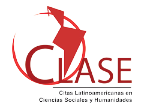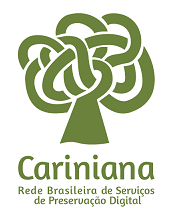Semantic web and ontologies: a study on construction of axioms and use of inferences
DOI:
https://doi.org/10.5433/1981-8920.2016v21n2p217Keywords:
Semantic Web, Linked Data, Inferences, Ontologies, SparqlAbstract
Introduction: The Semantic Web provides technologies and concepts that go through by issues such as description, representation and queries of data. In this scenario, ontologies contextualize the information, allowing generation of inferences. The OWL language has features that facilitate the inclusion of logic in the data, it is an essential element for the Semantic Web and Linked Data. However, the question is: how these inferences can be viewed and used in the Semantic Web. Objective: To analyze the inference types in the context of Semantic Web technologies, and consequently to the Linked Data. Methodology: It consisted in two parts, the first a literature review for discussion of the topic, and the second an exploratory study based on concepts proof and inferences testing. Results: We identify and present four embodiments of inferences, making tests to prove their application. Conclusions: The use of inferences in ontologies can occur in many ways and there is a variation in the expression that the types of inferences have. We found that inferences can add logic to the representations of the data, since the contextualization of information using ontologies contains axioms, increasing the representational capacity of information when using inferences. Noteworthy is the OWL language as a reference for enrichment and integration of axioms in the construction of ontologies.
Downloads
References
BERNERS-LEE T.; HENDLER, J.; LASSILA, O. The semantic web. Scientific American, New York, v. 5, May 2001.
BERNERS-LEE, T. Linked Data: Design Issues 2006. Disponível em: http://www.w3.org/DesignIssues/LinkedData.html> Acesso em: 10 jun. 2016.
BIZER, C.; HEATH, T.; BERNERS-LEE, T. Linked data - The story so far. International Journal on Semantic Web and Information Systems, v. 5, n. 3, p. 22, 2009.
BRASIL, L. M.. Proposta de arquitetura para sistema especialista híbrido e a correspondente metodologia de aquisição do conhecimento. 1999. 256 f. Tese (Doutorado em Engenharia Elétrica) - Universidade Federal de Santa Catarina, Florianópolis. 1999. Disponível em:https://repositorio.ufsc.br/bitstream/handle/123456789/81196/137930.pdf?sequence=1>. Acesso em: 29 jun. 2016.
CAMPOS, J.; SANTACHÈ, A.; TEIXEIRA, C. Visualização de modelos tridimensionais de sistemas de informações geográficas distribuídos baseados na WEB. In: BRAZILIAN WORKSHOP ON GEOINFORMATICS, 1999, Campinas. Proceedings… São José dos Campos: INPE, 1999. p. 50-58.
GRUBER, T. R. A translation approach to portable ontology specifications. Technical Report KSL92-71. Stanford: Knowledge Systems Laboratory. Stanford University, 1993. Disponível em: http://wwwksl.stanford.edu/KSL_Abstracts/KSL- 92-71.html>
GUARINO, N. Understanding, building and using ontologies. In: PROCEEDINGS OF KNOWLEDGE ACQUISITION FOR KNOWLEDGEBASED SYSTEMS WORKSHOP. 10. 1996.
GUARINO, N. Formal ontology and information systems. In: INTERNATIONAL CONFERENCE ON FORMAL ONTOLOGY IN INFORMATION SYSTEMS - FOIS'98, 1998, Trento. Proceedings… Amsterdam: IOS Press, 1998. p. 3-15.
HEATH, T.; BIZER, C. Linked data: evolving the web into a global data space. Morgan & Clarepool, 2011.
HORROCKS, I. et al. SWRL: A Semantic Web Rule Language Combining OWL and RuleML. 2004. Disponível em: https://www.w3.org/Submission/SWRL/>. Acesso em: 20 jun. 2016.
SANTAREM SEGUNDO, J. E. Representação Iterativa: um modelo para repositórios digitais. 2010. 224 f. Tese (Doutorado em Ciência da Informação) - Faculdade de Filosofia e Ciências, Universidade Estadual Paulista, Marília. 2010.
SANTAREM SEGUNDO, J. E. Web Semântica: introdução a recuperação de dados usando SPARQL. In: ENCONTRO NACIONAL DE PESQUISA EM CIÊNCIA DA INFORMAÇÃO: além das nuvens, expandindo as fronteiras da Ciência da Informação, 15., 2014. Belo Horizonte. Anais... Belo Horizonte: UFMG/ ECI, 2014. p. 3863-3882.
SANTAREM SEGUNDO, J. E.; CONEGLIAN, C. S. Tecnologias da Web Semântica aplicadas a organização do conhecimento: padrão SKOS para construção e uso de vocabulários controlados descentralizados. In: Organização do Conhecimento e Diversidade Cultural. Marília: Fundepe, 2015, v. 3, p. 224-233. Disponível em: http://isko-brasil.org.br/wpcontent/uploads/2015/09/Organiza%C3%A7%C3%A3o-do-Conhecimento-eDiversidade-Cultural-ISKO-BRASIL-2015.pdf>. Acesso em: 25 jun. 2016.
SANTAREM SEGUNDO, J. E. Web semântica, dados ligados e dados abertos: uma visão dos desafios do Brasil frente às iniciativas internacionais. Tendências da Pesquisa Brasileira em Ciência da Informação, v. 8, n. 2, 2015. Disponível em:http://inseer.ibict.br/ancib/index.php/tpbci/article/view/207>. Acesso em: 25 jun. 2016.
SHADBOLT, N.; BERNERS-LEE, T.; HALL, W. "The Semantic Web Revisited," in IEEE Intelligent Systems, v. 21, n. 3, p. 96-101, Jan.-Feb. 2006.
SPARQL. Sparql 1.1 Overview. W3C, 2013. Disponível em http://www.w3.org/TR/2013/REC-sparql11-overview-20130321/>. Acesso em: 13 jun. 2016.
Downloads
Published
How to Cite
Issue
Section
License
Copyright (c) 2021 Informação & Informação

This work is licensed under a Creative Commons Attribution 4.0 International License.
A revista se reserva o direito de efetuar, nos originais, alterações de ordem normativa, ortográfica e gramatical, com vistas a manter o padrão culto da língua e a credibilidade do veículo. Respeitará, no entanto, o estilo de escrever dos autores. Alterações, correções ou sugestões de ordem conceitual serão encaminhadas aos autores, quando necessário.
O conteúdo dos textos e a citação e uso de imagens submetidas são de inteira responsabilidade dos autores.
Em todas as citações posteriores, deverá ser consignada a fonte original de publicação, no caso a Informação & Informação.














